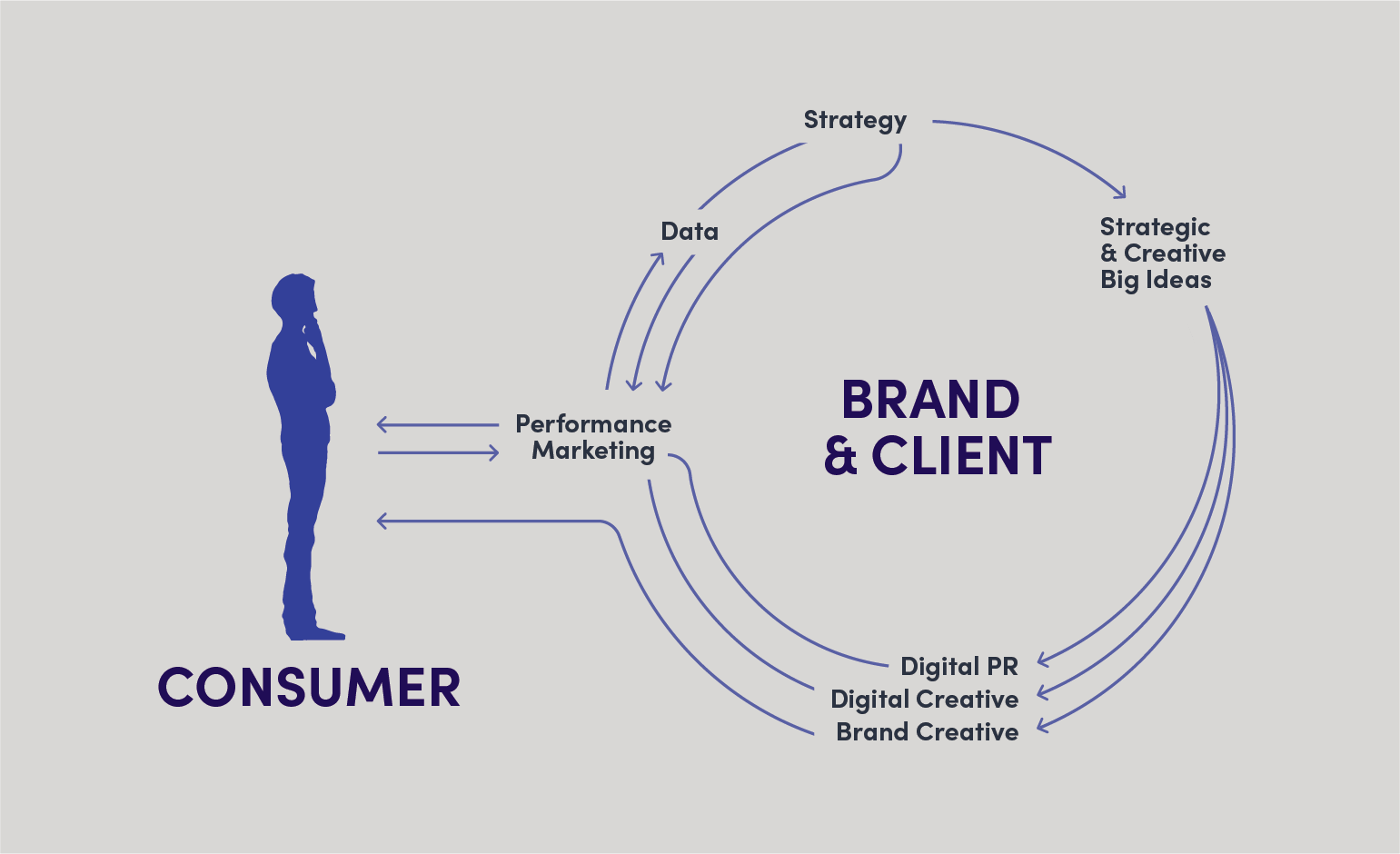The Future of Marketing: Integration and the Convergence of Brand and Performance Marketing

Digital growth during the last decade has impacted every brand and every function, but perhaps none as much as marketing. Marketing was once considered a "thing we have to do" or worse, a cost center, but now it's seen as a strategic growth driver. And that spells OPPORTUNITY.
Intangible aspects of marketing have been replaced with tracking, measurement, and analytics that (finally) prove marketing's value—and CEOs are taking notice. According to McKinsey & Company, 78% of CEOs are now banking on marketing leaders to drive growth. Also, CEOs and CMOs are becoming more aligned on the role of marketing within companies.

Now that marketing has rightfully earned its position as a driver of success and growth, it must deliver. The optimal way to ensure marketing success is by properly integrating all marketing channels—particularly brand and performance marketing.
What is Marketing Integration?
In its simplest terms, marketing integration is when each component of the marketing lifecycle is connected, like a chain, with a single set of objectives, targets and strategy driving all channels.. Whether it's performance marketing (paid media, SEO, social, conversion optimization), data and analytics, public relations, creative, or strategy, each channel is aligned with the other, infused by the brand at the center to ensure differentiation through unique messaging and positioning.

For far too long, we, as marketers, have falsely believed in independent marketing channels. But the truth is there is no such thing. Each channel is interconnected and impacted by the other because consumers move across touchpoints to engage and buy: SEO impacts paid media; PR impacts SEO; social media cannot function without brand, content strategy, and public relations; and analytics is meaningless by channel without a holistic view across all channels. And side note: websites are NOT an IT function. They are the backbone of every marketing channel and strategy that exists.
Integration is happening because, like most things, it’s driven by the consumer. Yet, marketing as a function has not caught up. Instead, internal marketing teams continue to be siloed by channel, missing clear opportunities to improve outcomes and drive brand growth.
Data Proves Integration Works
Of course, if integration were an easy solution, everyone would be doing it. It's challenging to shift the way marketing teams exist and operate fundamentally. However, the reward for doing the hard work is unmistakable.
Research shows integrated campaigns across four or more channels outperform single or dual-channel campaigns by 300%, and integrated marketing is 31% more effective at building brands.
Integration works, and it's the undisputed future of marketing. But let's be clear, we're not the only agency leading this charge. Thought leaders at McKinsey & Company, Gartner, and Salesforce believe it's the future as well.
"In our experience, a thoughtful and data-driven full-funnel marketing strategy can drive significant value. By shifting greater media allocation to areas with higher returns and employing test-and-learn optimization for demand-generation campaigns, marketers can achieve a 15 to 20 percent lift in marketing ROI. Additionally, many marketers have found that incorporating both brand building and performance elements in a campaign often increases the overall return on ad spend compared with spending on performance channels alone."
- McKinsey & Company
"Integrating the data flowing in from all of the platforms marketers use into a cross-channel view enables the evaluation and improvement of marketing performance."
- Salesforce Marketing Intelligence Report
How To Implement Integration Effectively
Implementing integration effectively starts with creating a singular objective, set of targets, and strategy that drives every marketing channel. It’s a significant pivot from how teams and channels currently exist, so a link-by-link rollout is likely best. For example, start by integrating SEO with paid media. Then add PR to the chain, followed by content strategy and then social media. As teams see improved alignment and outcomes, integration transforms from possibility to reality, and marketing can live up to its full potential: a strategic growth driver.
So let's lead the future of marketing today. It's time to usher in the era of integration. Join us.

